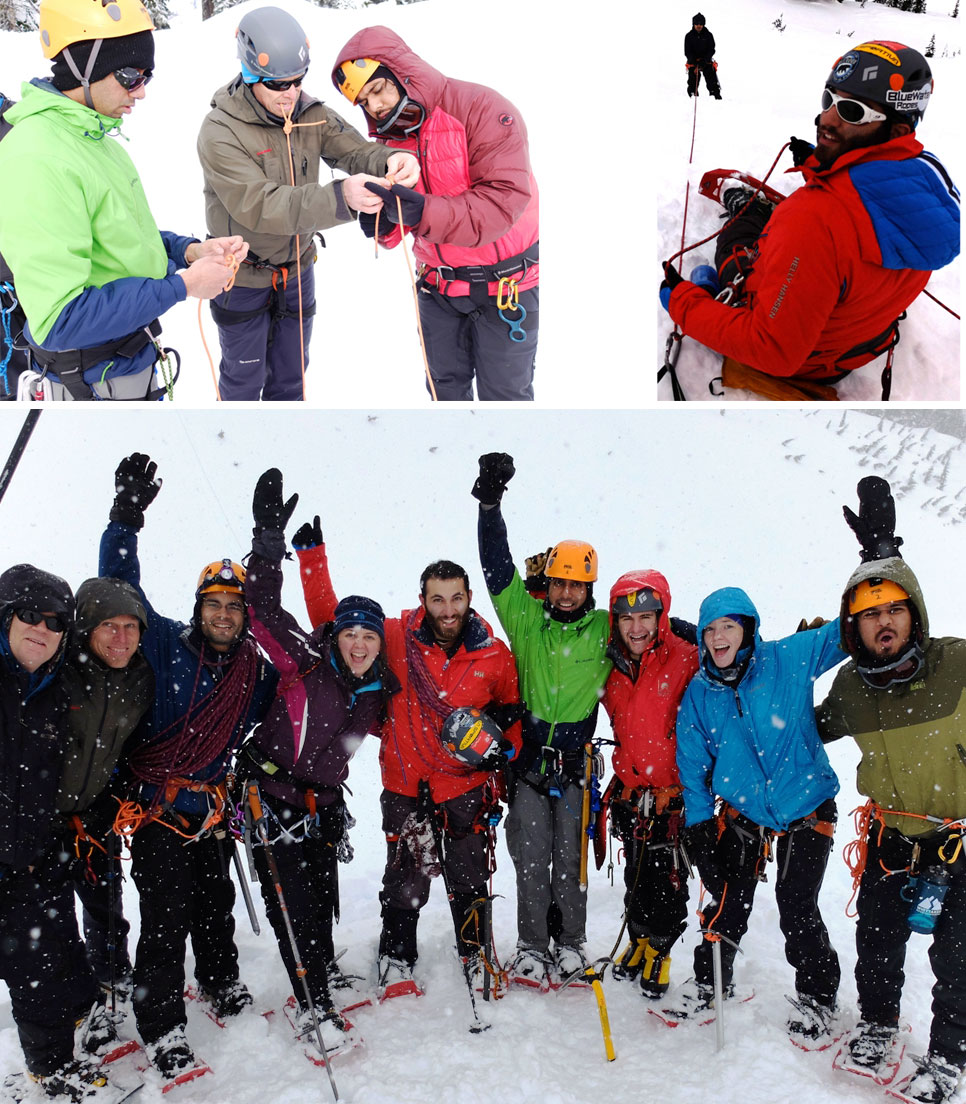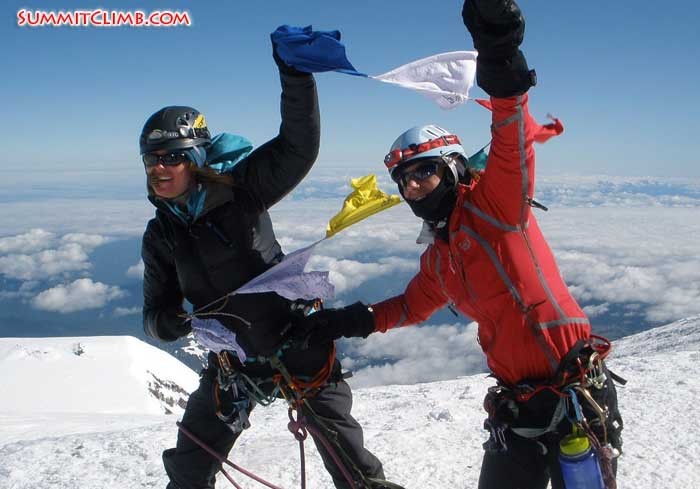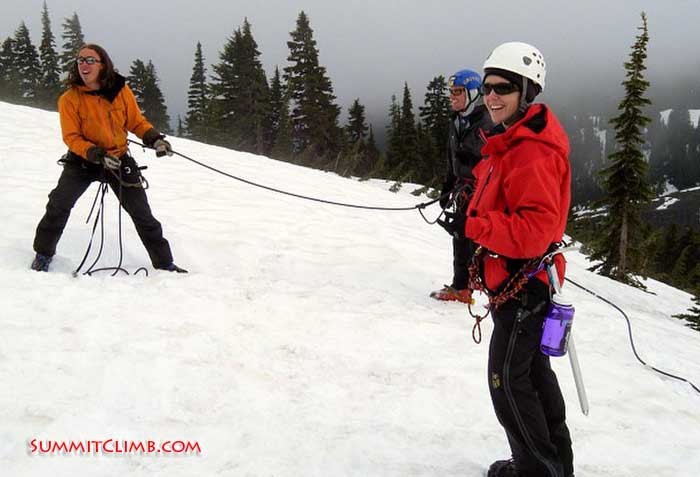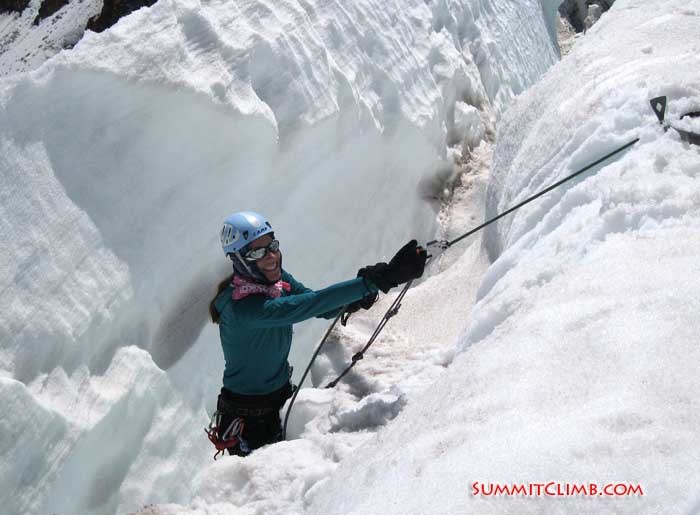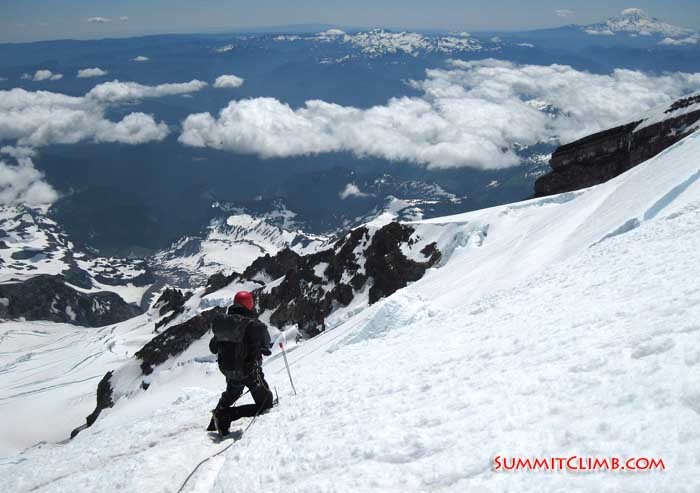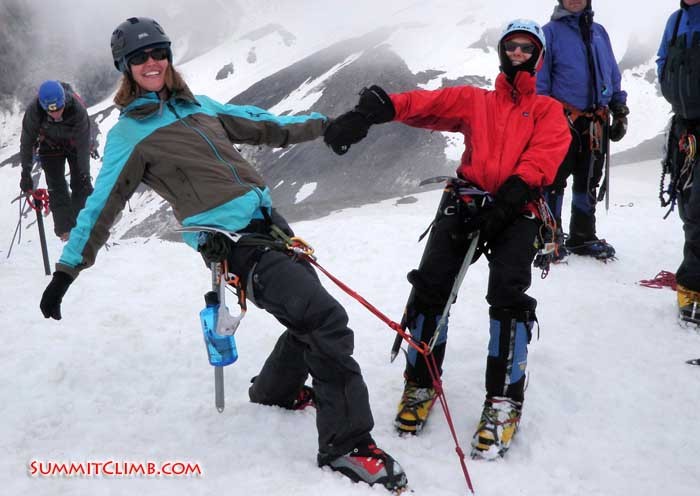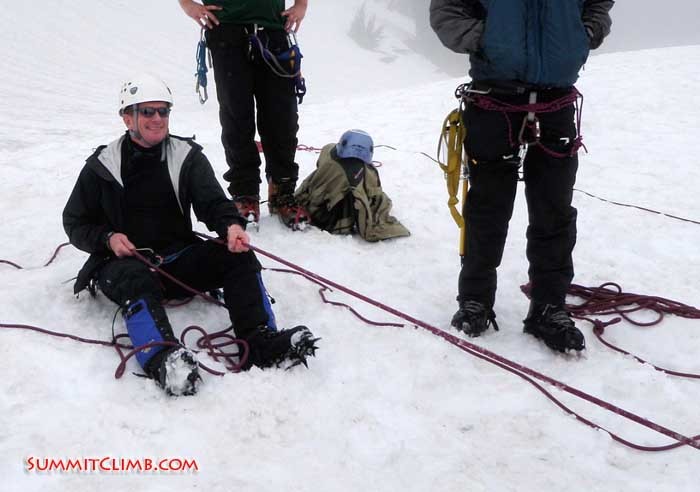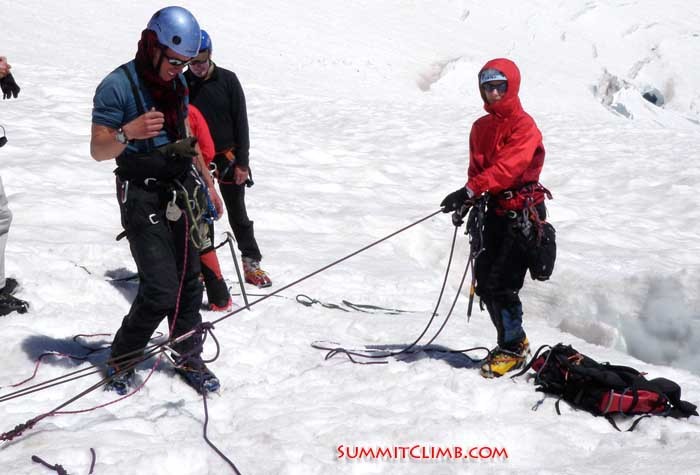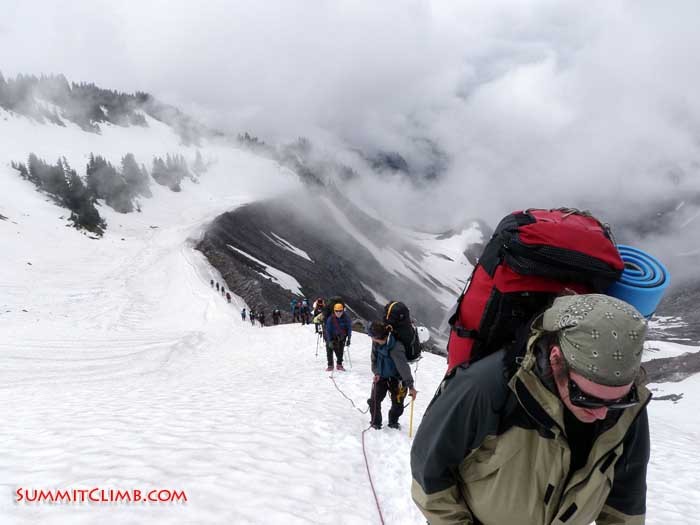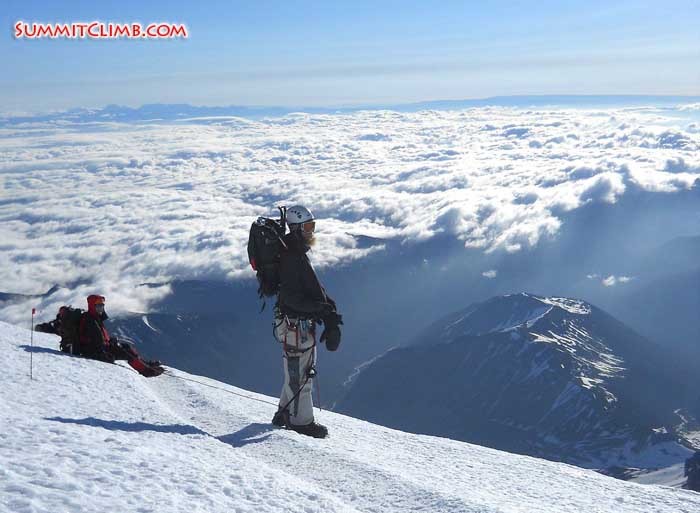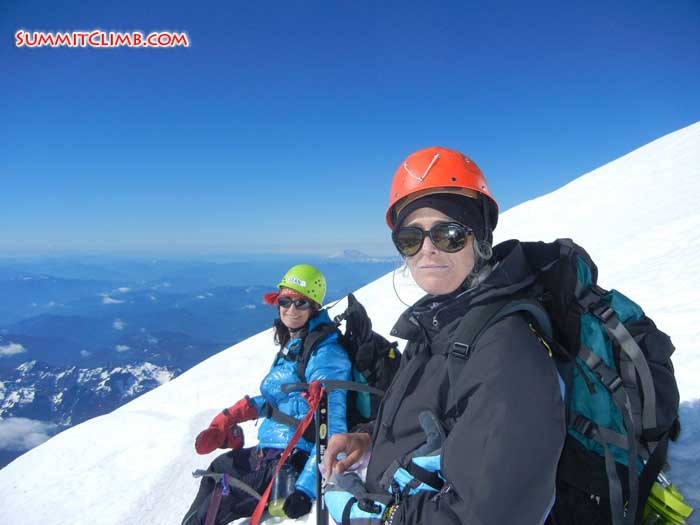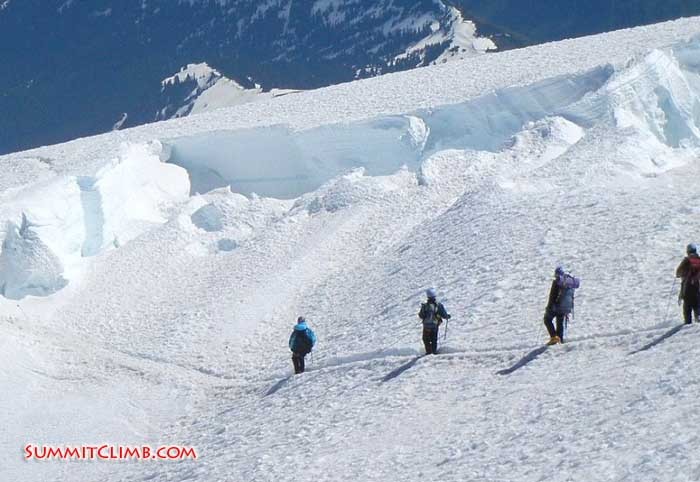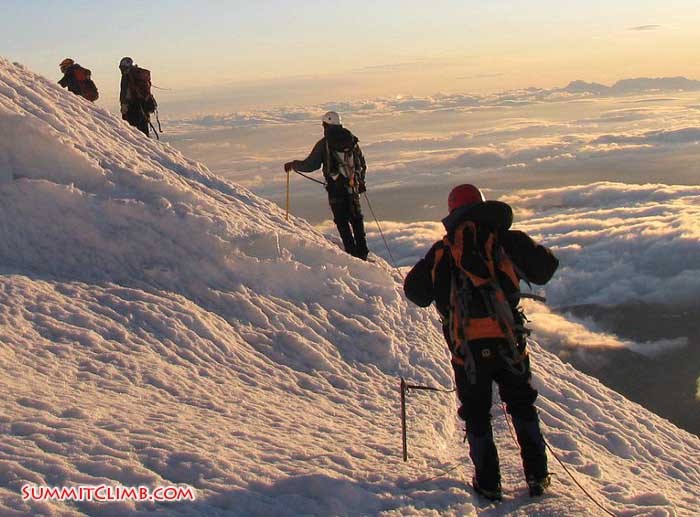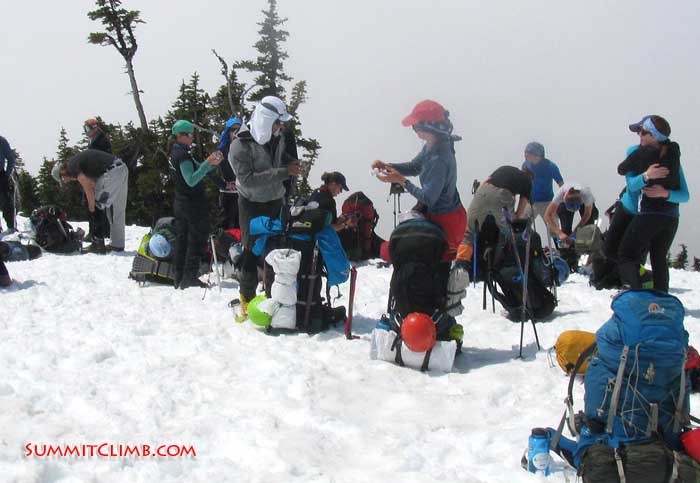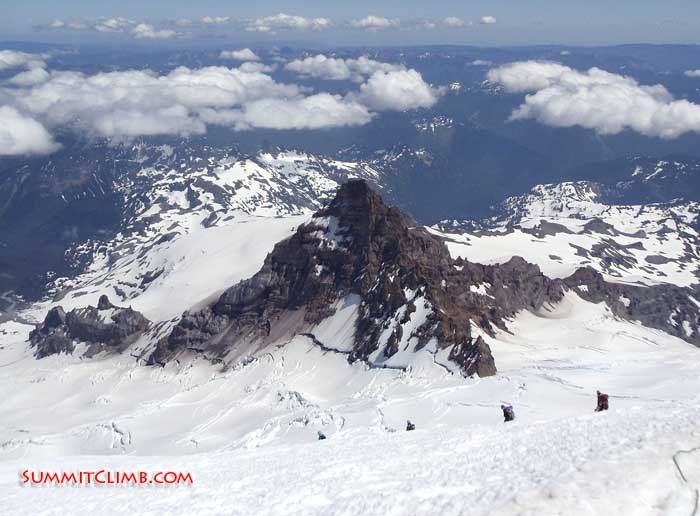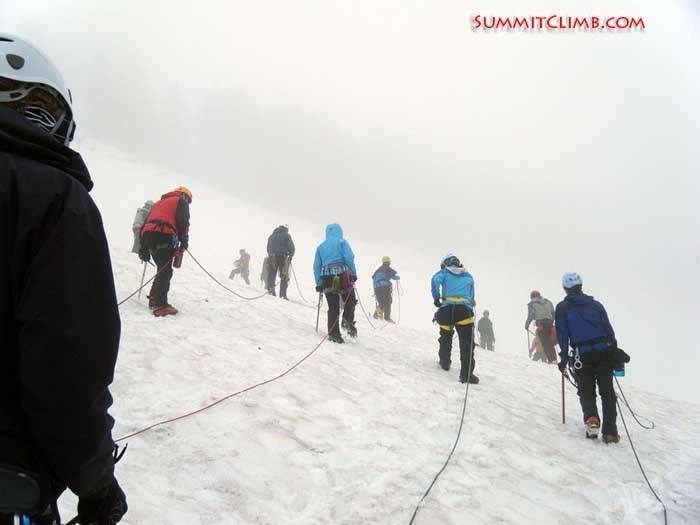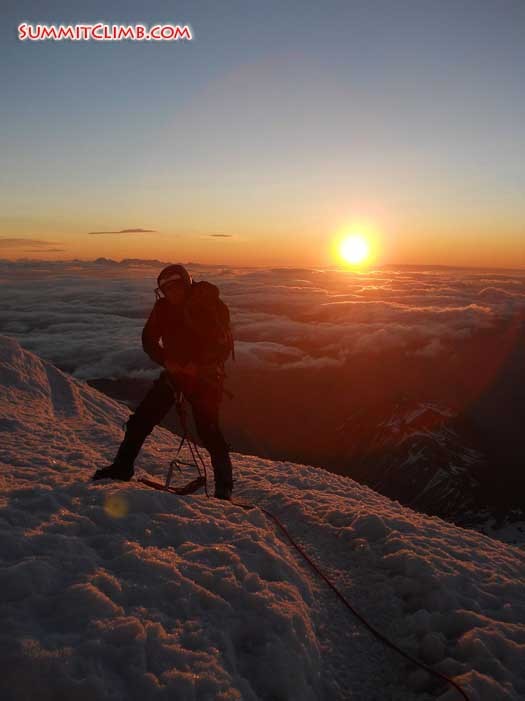- Snow shoe (racquette) and ski travel.
- Snow cave/igloo construction;
- Snow camping and cooking;
- Self arrest technique;
- GPS, map and compass;
- Avalanche detection and practice;
- Route finding;
- Roped glacier travel;
- Snow belay techniques;
- Ice and snow climbing;
Please join us for next year's Winter Glacier School:
- Tuesday, 1 January : Arrive at my house in Olympia; sleep on floor, or go to a motel. The choice is yours.
- Wednesday, 2 January : Gear check and equipment hire/rental and purchase;
- Thursday, 3 January :Travel to mountain, ski/snowshoe in and set up camp;
- Friday, 4 January : Winter glacier school activities day;
- Saturday, 5 January : Winter glacier school activities day;
- Sunday, 6 January : Departure from mountain, return to Olympia; take showers, sleep on floor, or go to a motel. The choice is yours.
- Monday, 7 January : Return flight home.
Thank you and please enjoy this news of our Winter Glacier School.
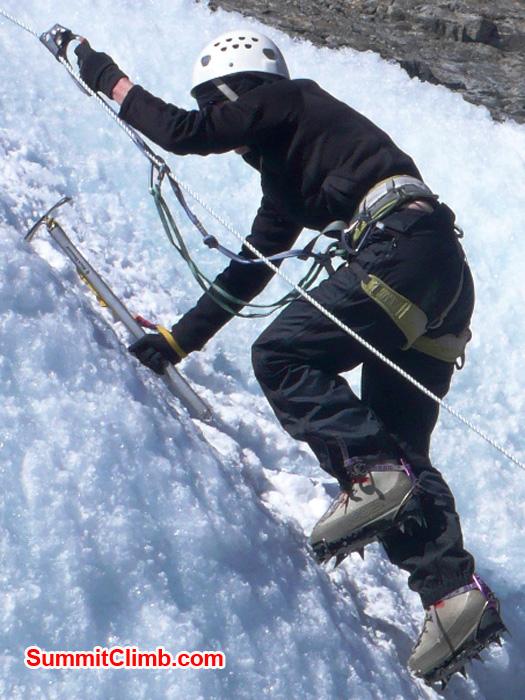
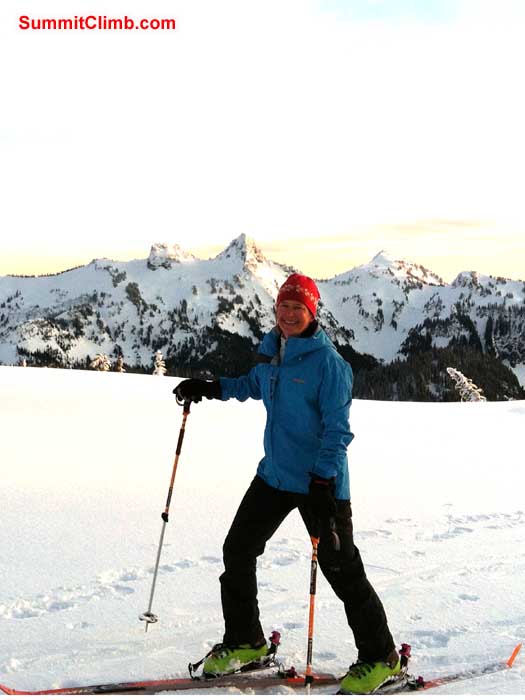
Practicing safe vertical ice climbing. Martha skinning up her skis to head up the mountain.
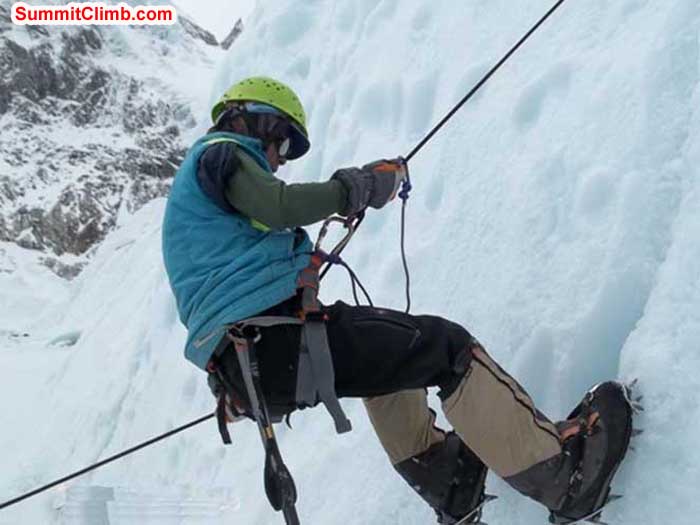
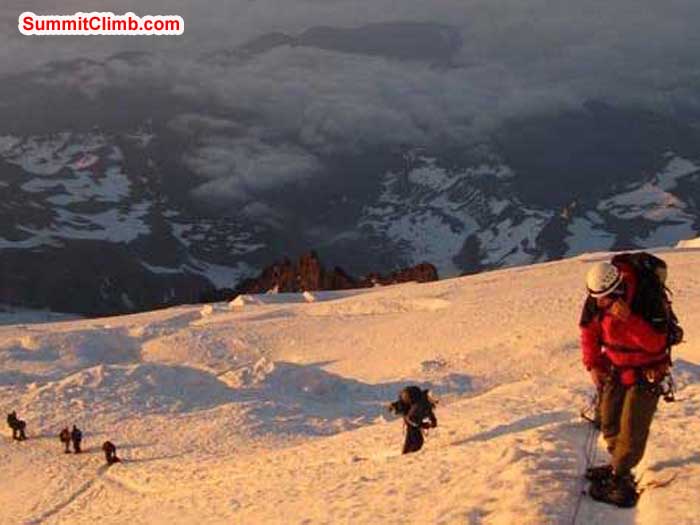
Practicing abseiling and ascending on fixed ropes and ice.
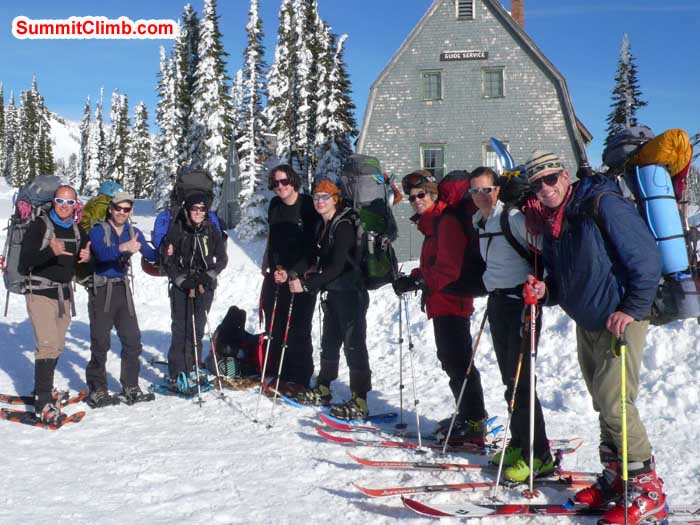
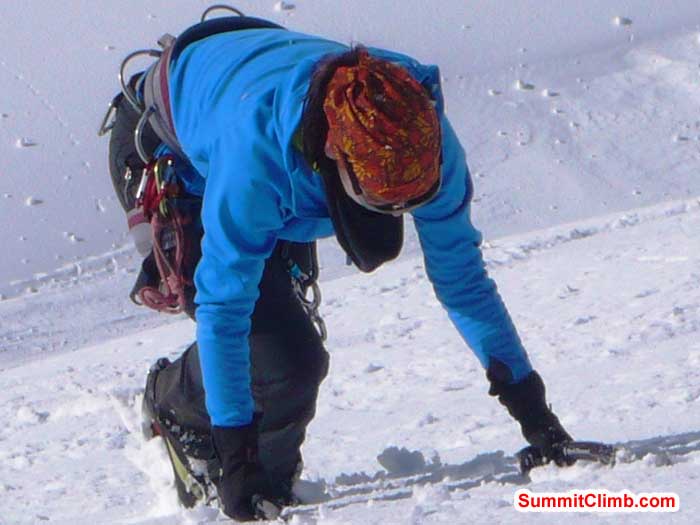
Team on 1st day of school. left to right - Ridlon Kiphart, Ari Karchin, Jaimie, Stewart Wolfe, Sylvi Montag Kawina, Tak Ogasawara, Martha Johnson, Dan Mazur. Sylvi Montag Kawina enjoying her snow cave.
Hello, I hope you are getting excited for our free of cost Winter Climbing School, Thursday 1 January –Wednesday 7 January .
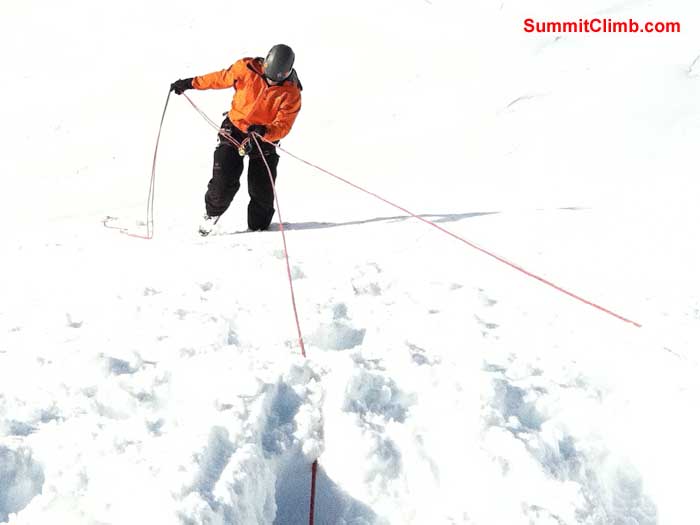
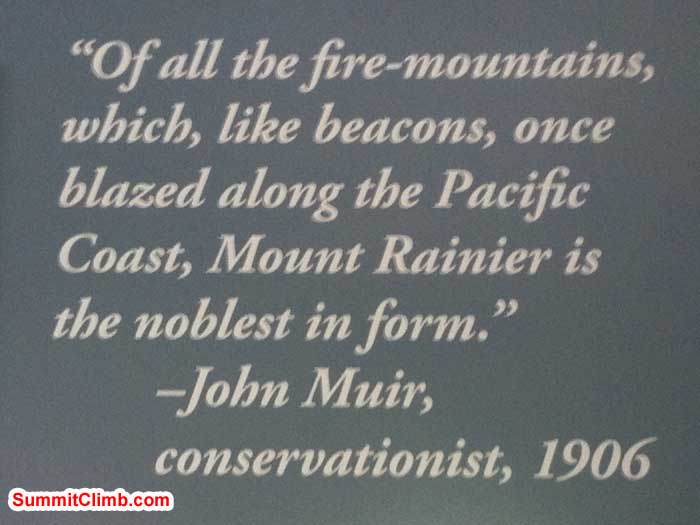
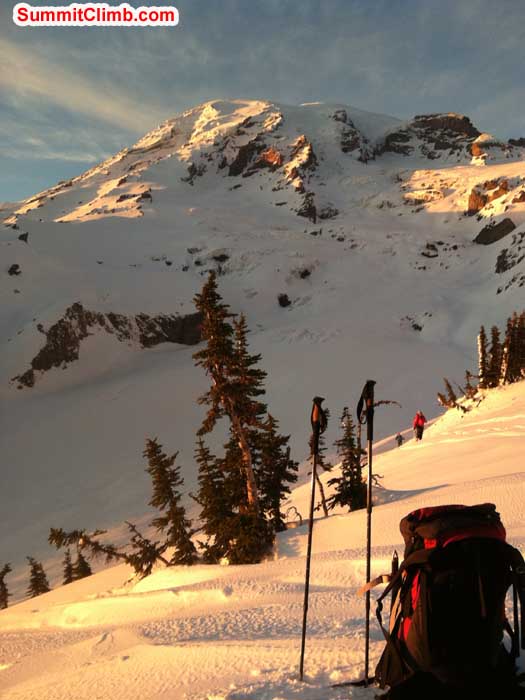
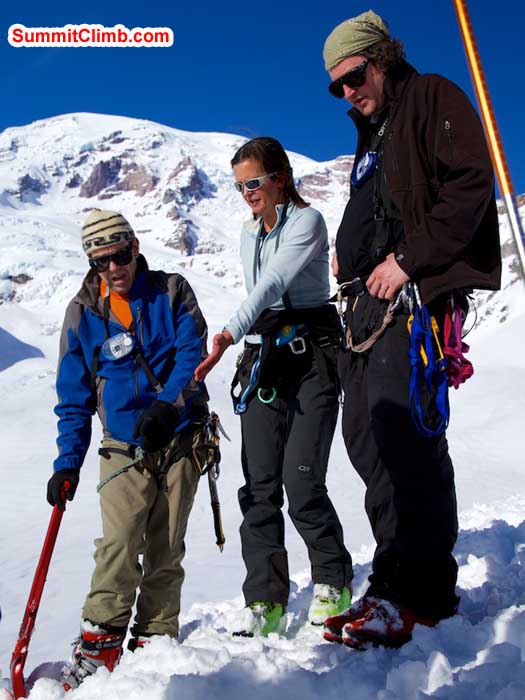
Eric ascending fixed rope safely. A famous John Muir quote we found inspiring while getting last minute missing bits for the climbing school. Beautiful sunset across the mountain as we were heading back to camp (Stewart Wolfe). Dan and Stewart showing snow level. Photo by Victor Mesny
Location of the School:
The winter climbing school is in Washington state, exact location to be determined according to conditions.
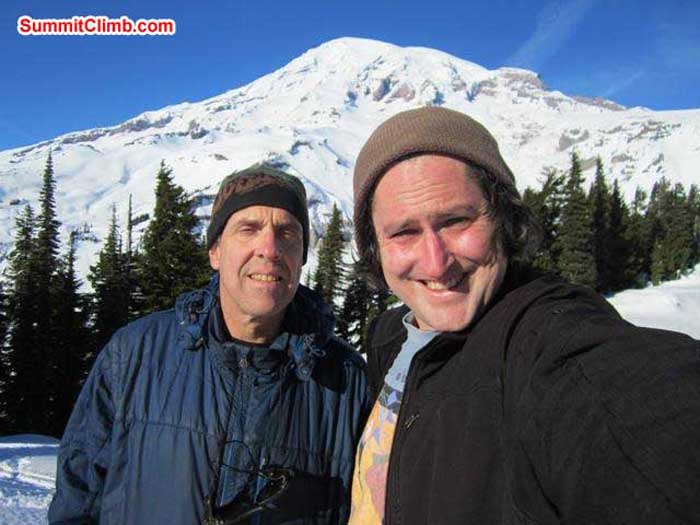
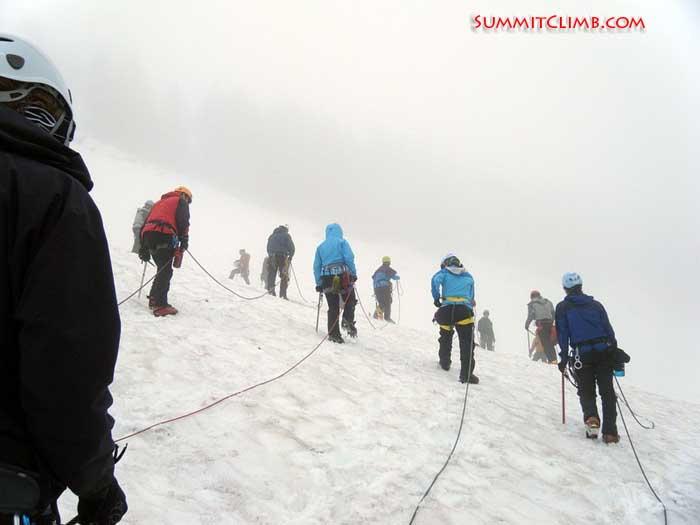
Dan and Stewart on our recent reconaissance mission to find out where the ice is in. Our teams roped up and learning safe glacier travel.
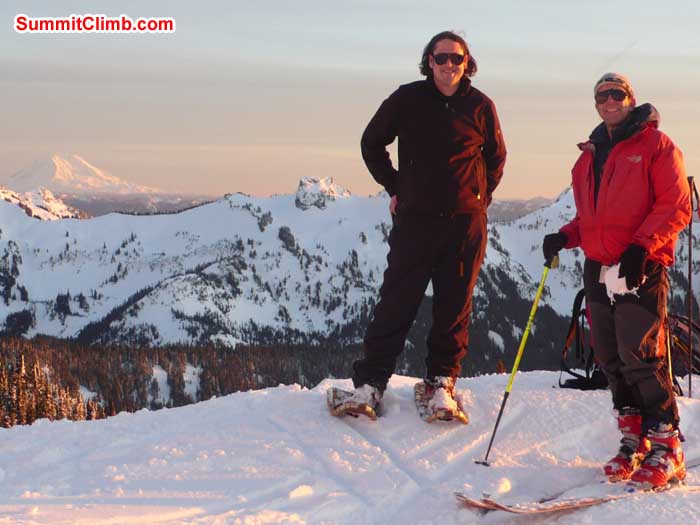
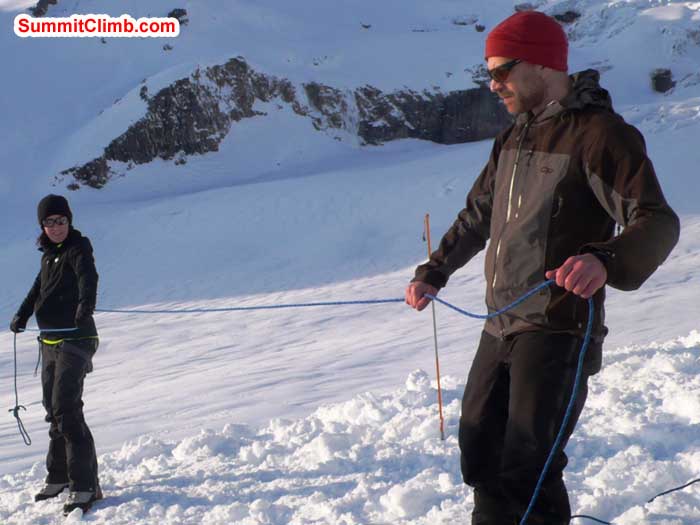
Stewart wolfe and Dan Mazur. Every mountaineer's challenge - Jaime Herriot and Ari Karchin practice 'flaking' the rope.
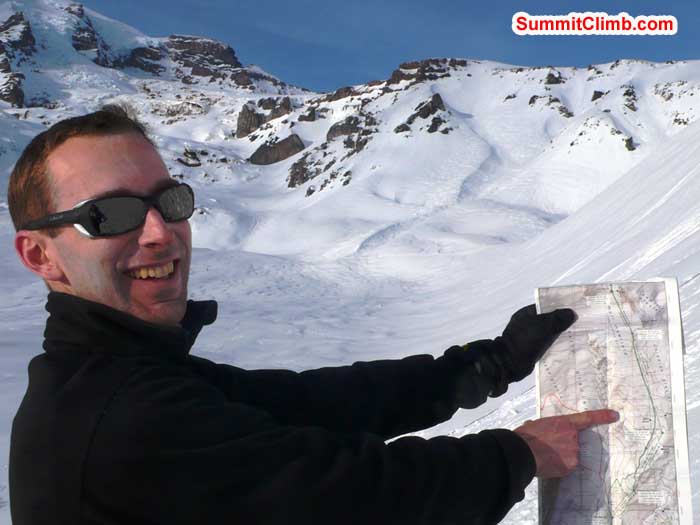
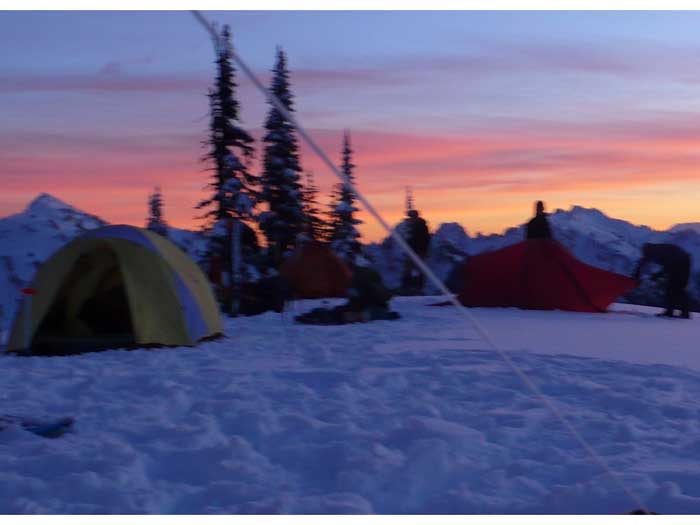
Victor Masny shows us the route on the map. After a flipping glissade,Setting up the tents at twilight.
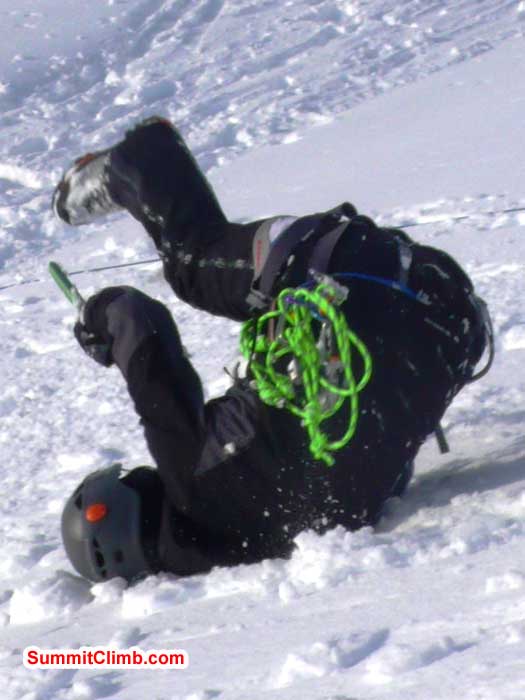
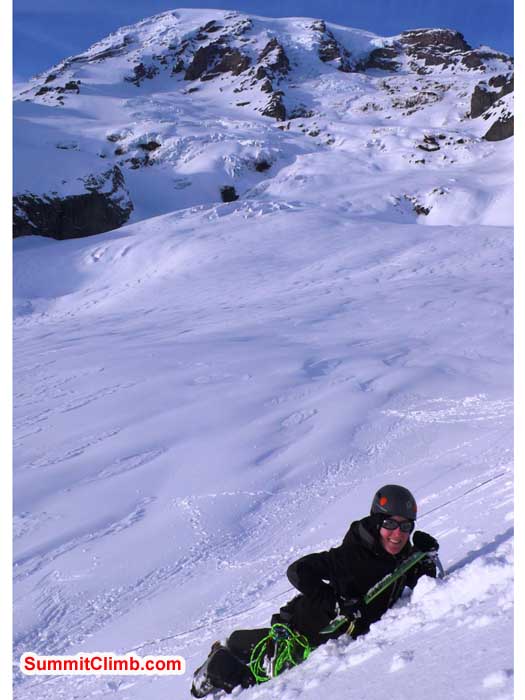
Jaime Herriot practices self arrest technique - flipping into a roll - while falling upside down and backward. Jaime Herriot stops herself with her ice axe during a glissade.
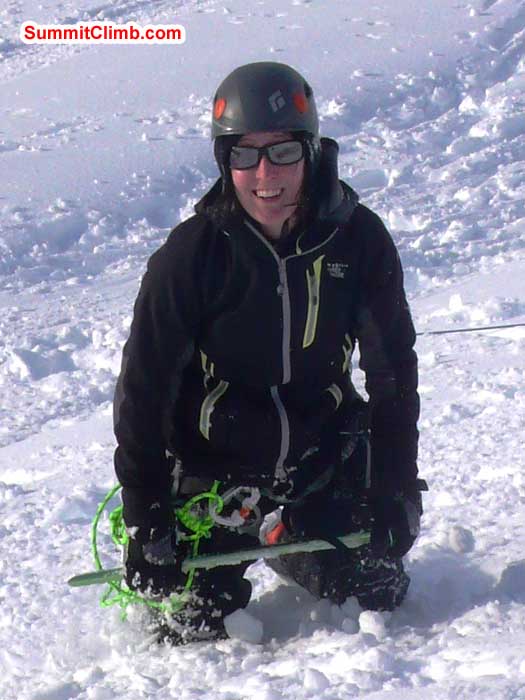
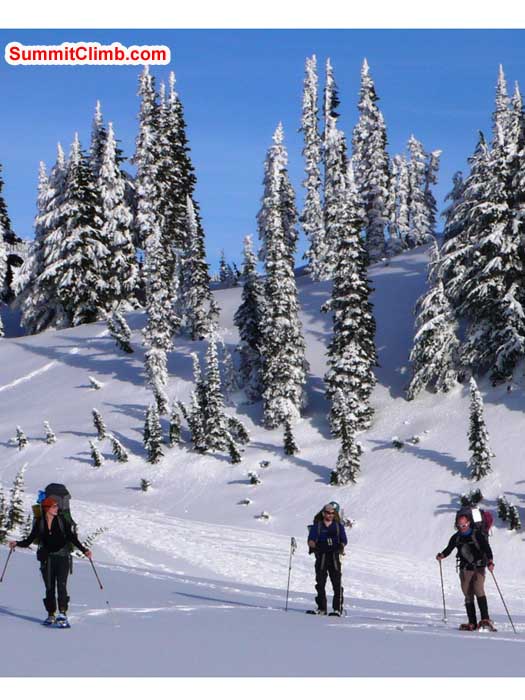
Jaime Herriot comes to a rest with her ice axe in the correct self arrest position. Sylvi Montag Kawina, Ari Karchin, and Ridlon Kiphart snowshoe to camp.
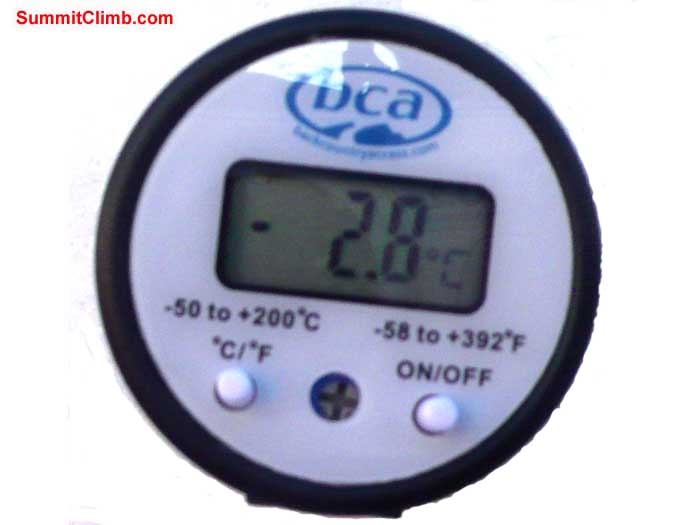
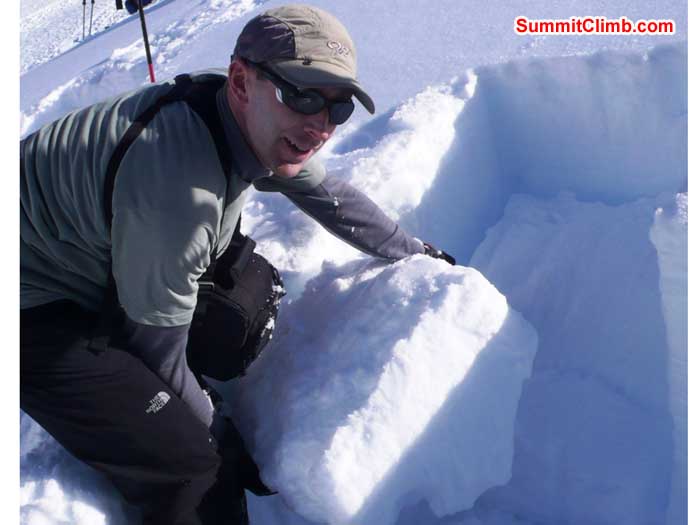
Using a thermometre to check the temperature of the snow pack, helps to determine if it might avalanche. Victor Masny conducting a shear test on the snow pack, in order to see at which layer an avalanche might occur.
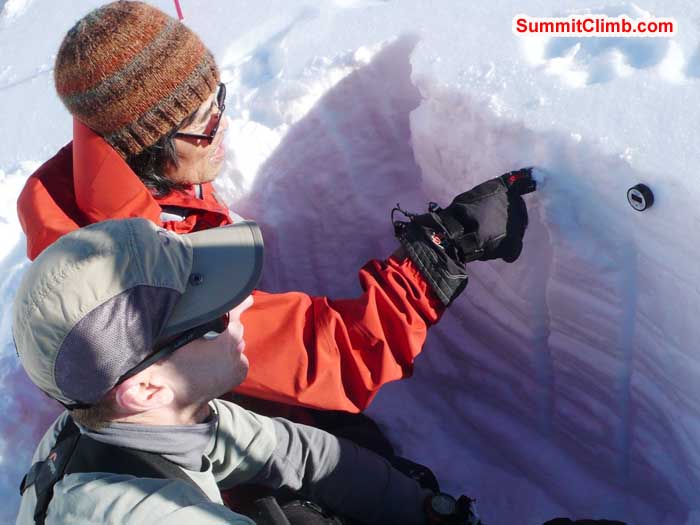
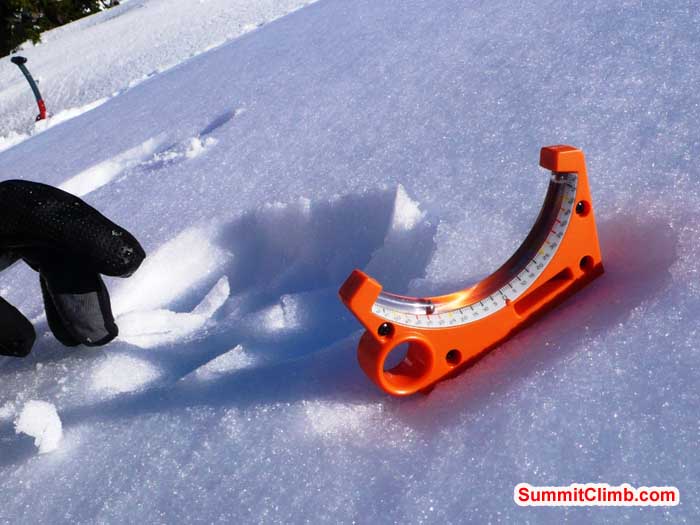
Tak Ogasawara and Victor Masny studying the snow layers and temperature in an avalanche test pit they dug. checking the angle of the slope with an inclinometre. this one measures 32 degrees.
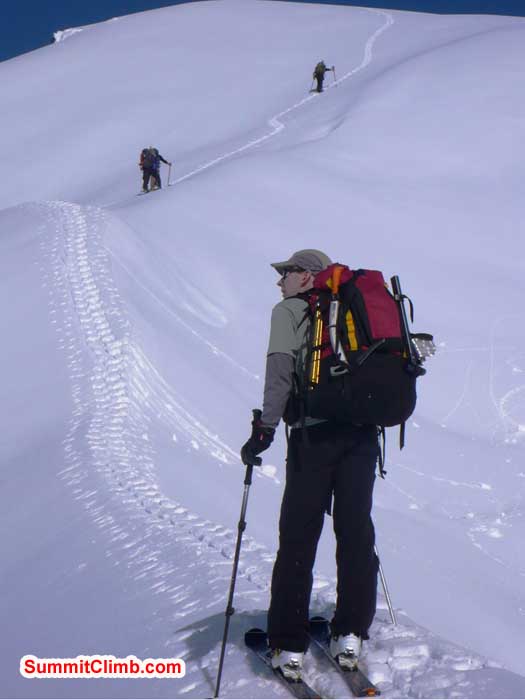
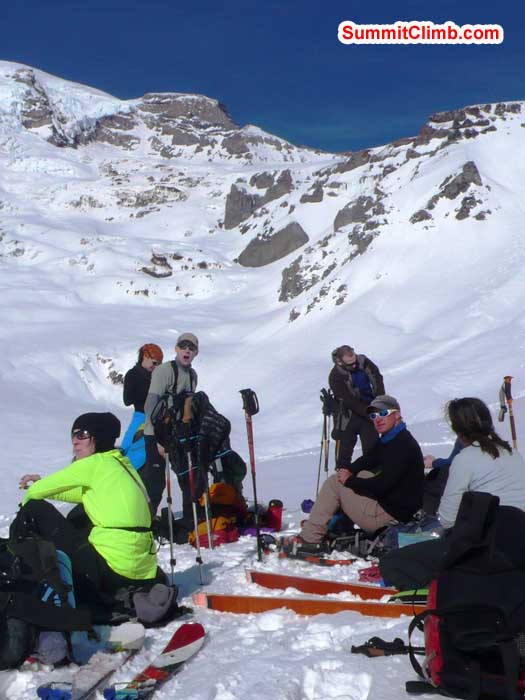
Ascending a snowy ridge toward the practice area. Team enjoying a much needed rest before setting off on the next phase of our winter school.
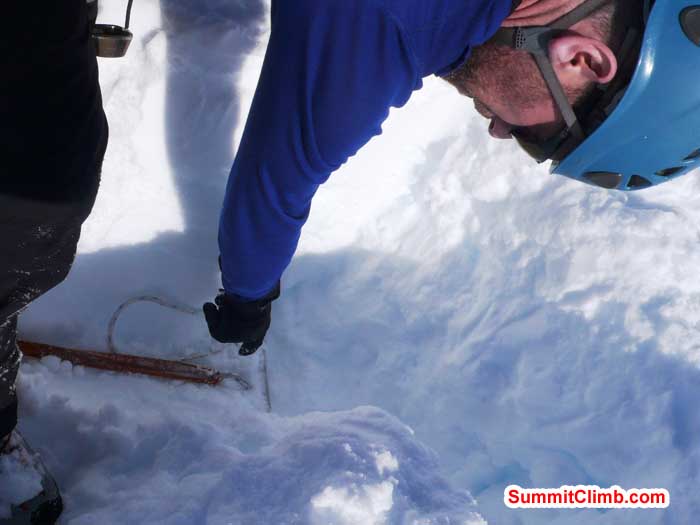
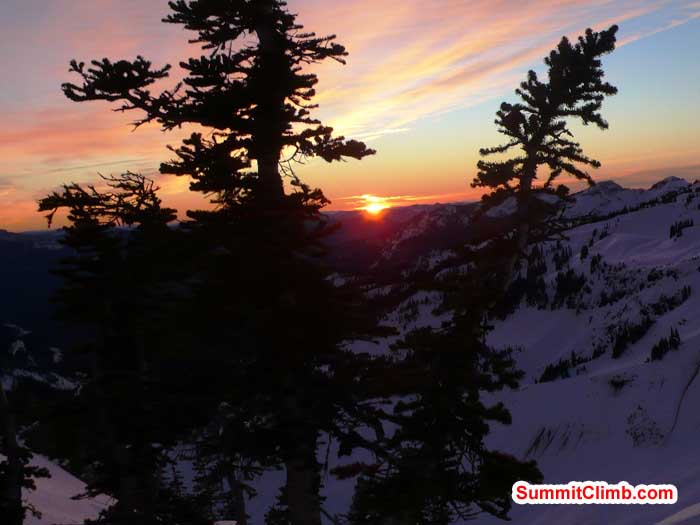
Ari Karchin demonstrates proper placement of a t-stake snow anchor. Golden sun sets like an orange ball behind snowy pine trees.
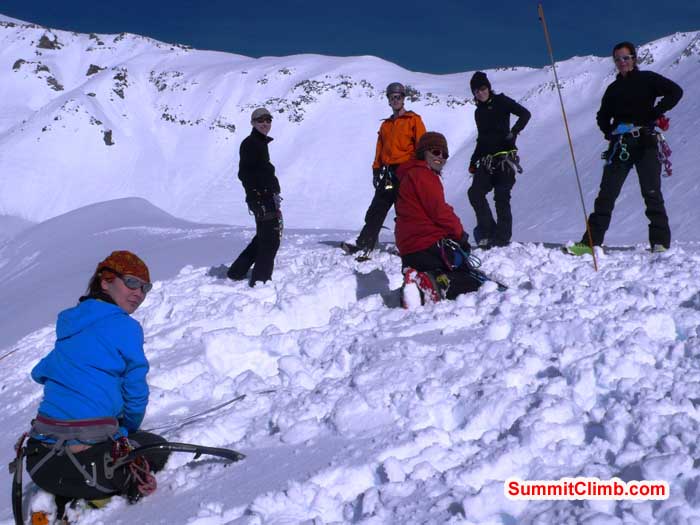
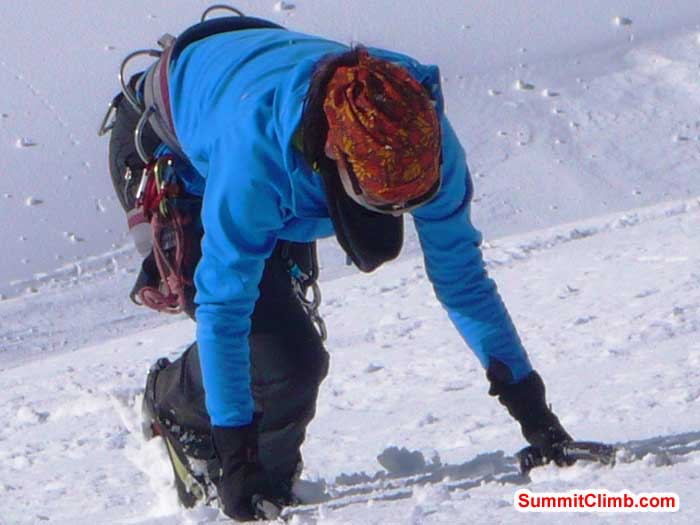
Team looks on while Sylvi and Tag build snow anchors. Sylvi Montag Kawina practices safe descent on steep snow.
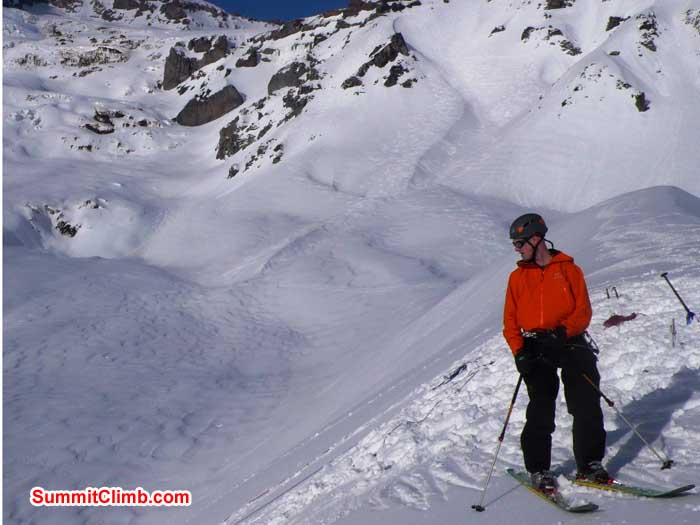
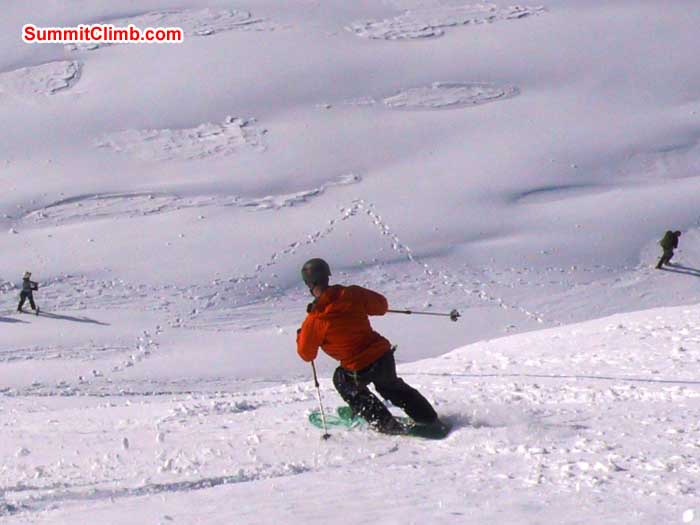
After setting up a belay, Eric McPherson decides to ski down. Eric skiis down while team navigates the glacier below..
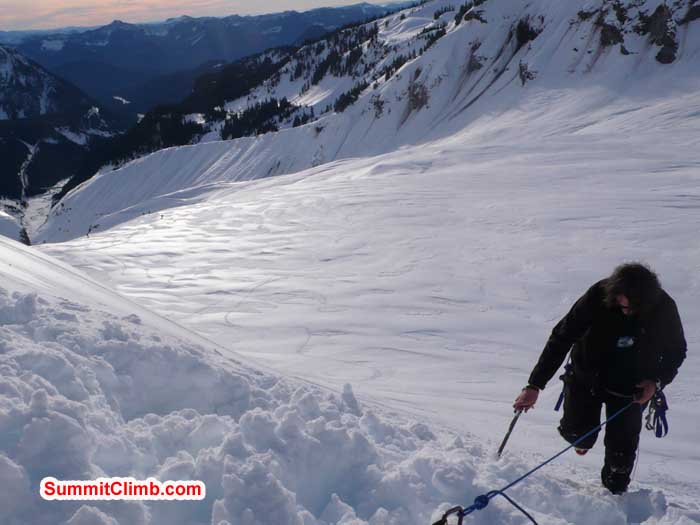
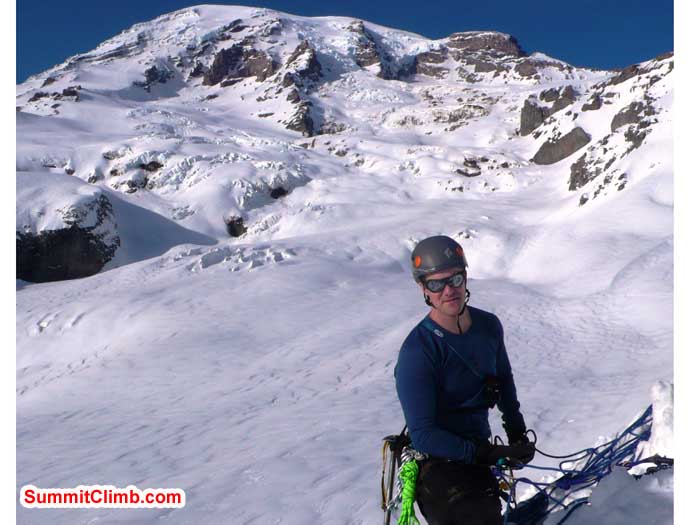
Stewart Wolfe demonstrating safe snow ascension technique, with ice axe, crampons, jumar, etc. Eric McPherson sets up a belay.
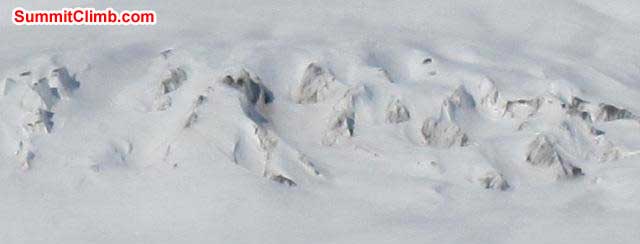
Potenial glacial area for practicing on what we saw on our recent reconaissance of local spots in Washington.
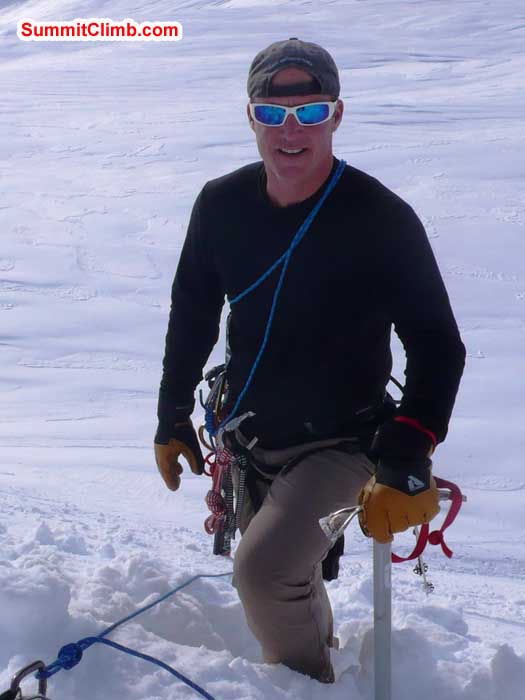
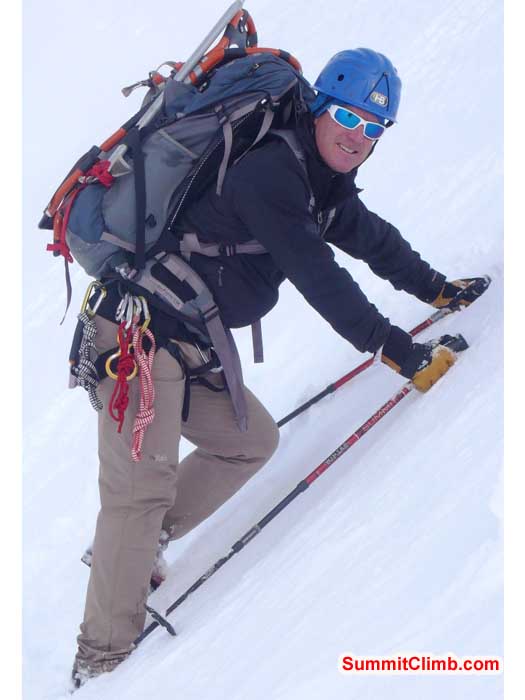
Ridlon Kiphart reaches the top anchor. Ridlon Kiphart shows proper downclimbing technique on steep snow slopes
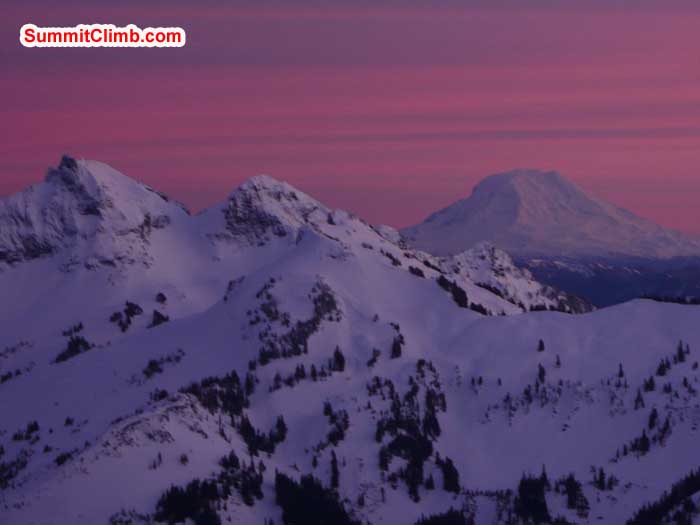
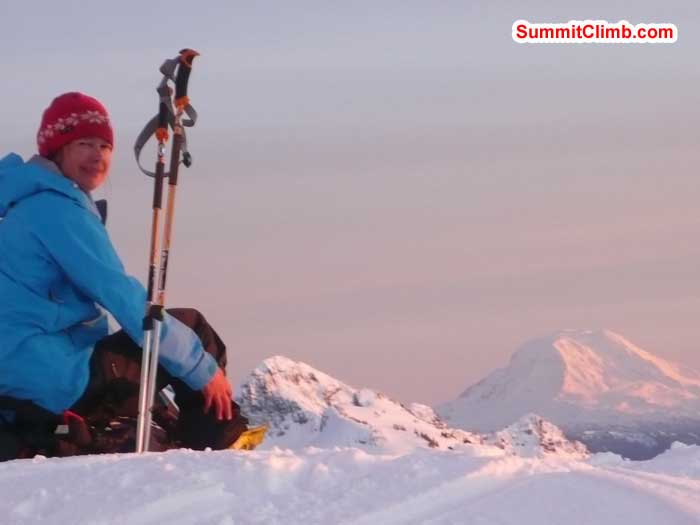
Peaks and volcanos at sunset. Martha Johnson in her comfortable tent.
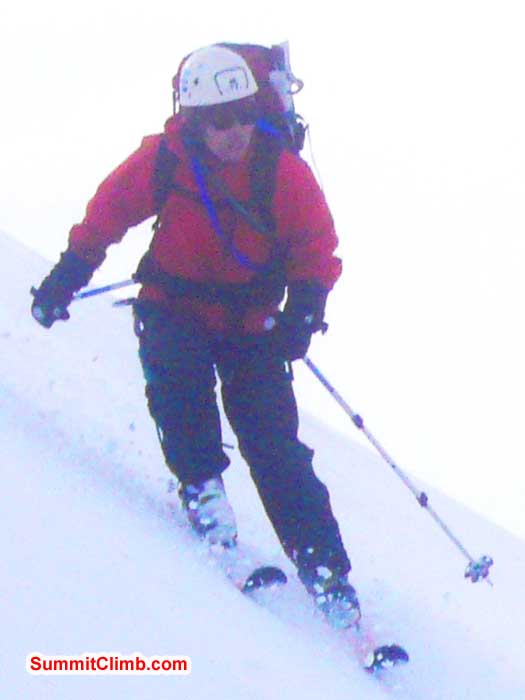
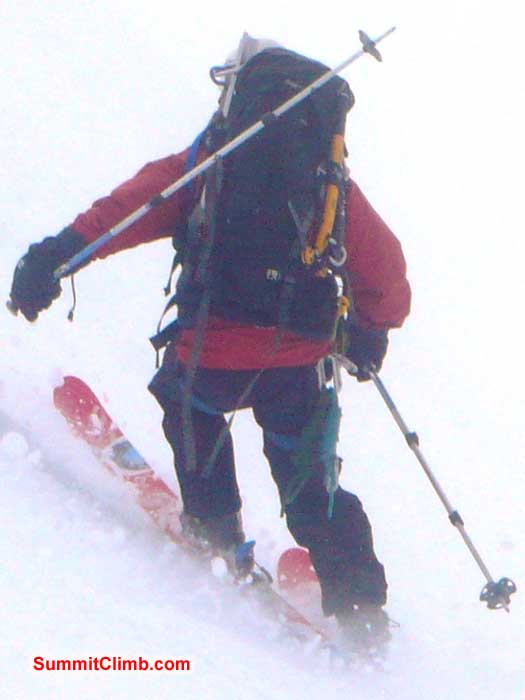
Tak Ogasawara, age 69, enjoying a ski run while the rest of us walk down. Tak ogasawara age 69 cutting a turn on the steep slopes while the rest of us look on in amazement.
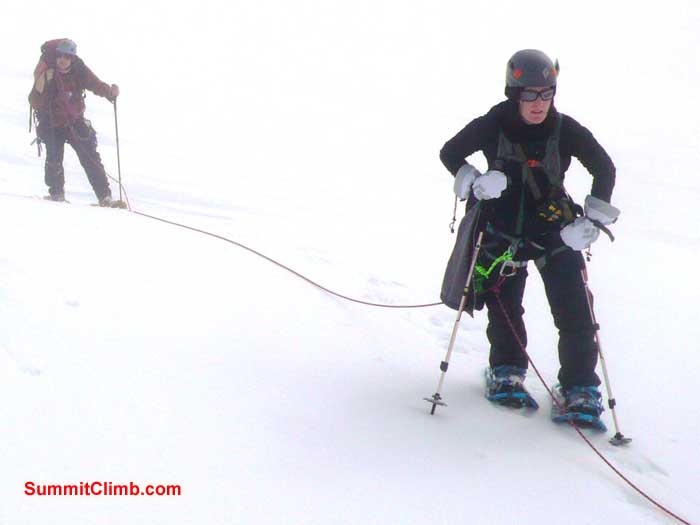
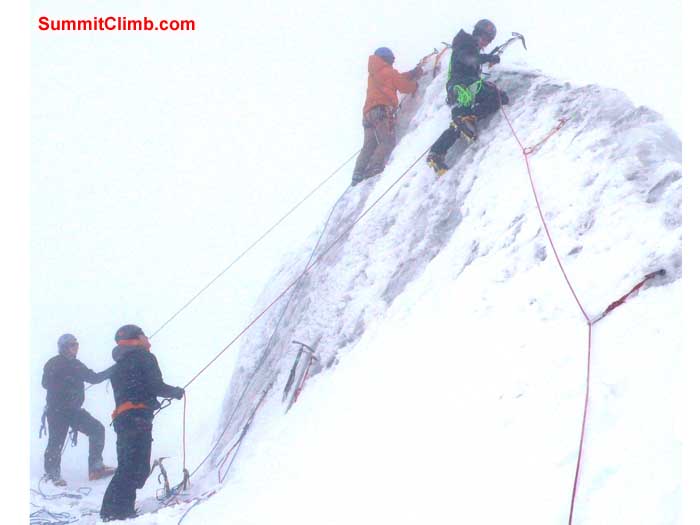
Stewart Wolfe and Jaime Herriot crossing the glacier roped together. Stewart Wolfe and Ari Karchin belaying Ridlon Kiphart and Jaime Herriot on the ice wall.
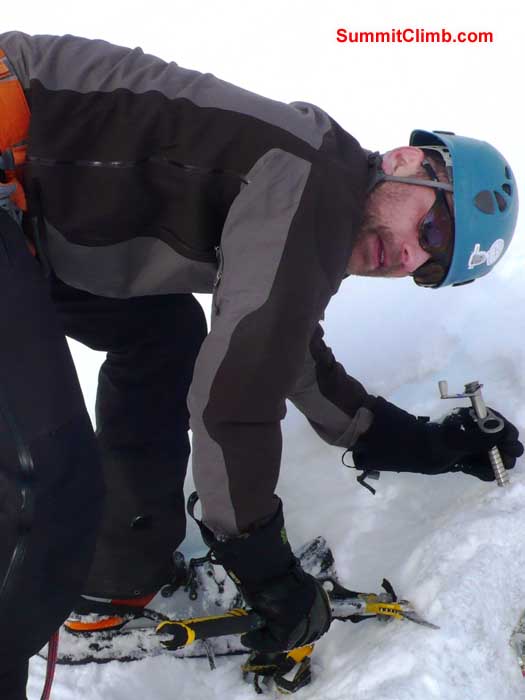
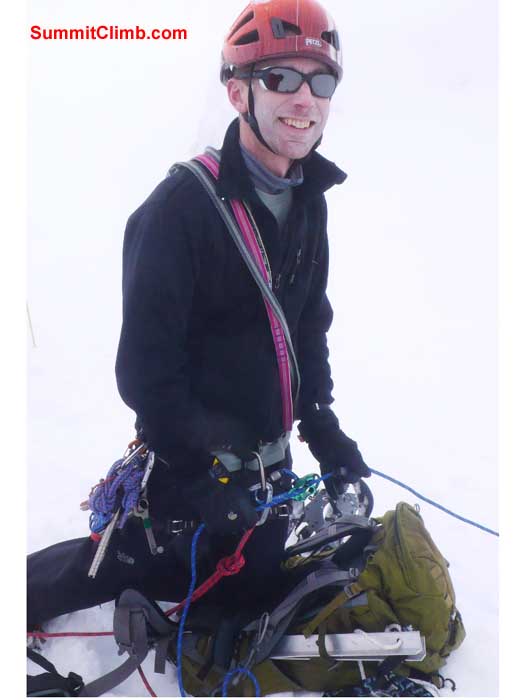
Ari Karchin puts in an ice screw. Victor Masny belays Ari Karchin on the ice wall.
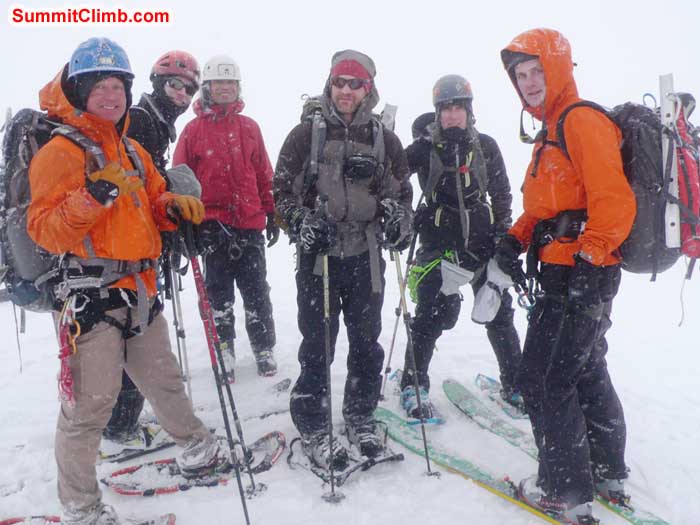
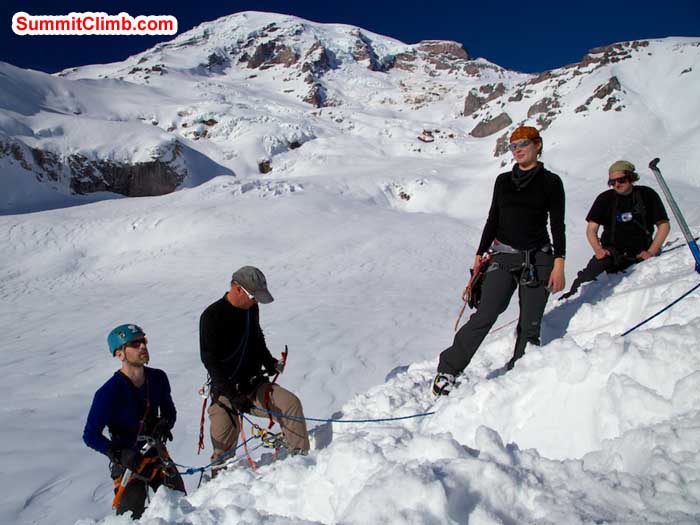
Group huddle during a sudden snow storm, left to right - ridlon kiphart, victor masny, tak ogasawara, ari karchin, jaime herriot, and eric mcpherson. Members trying for to use fix rope and climbing equipments. Photo by Victor Mesny
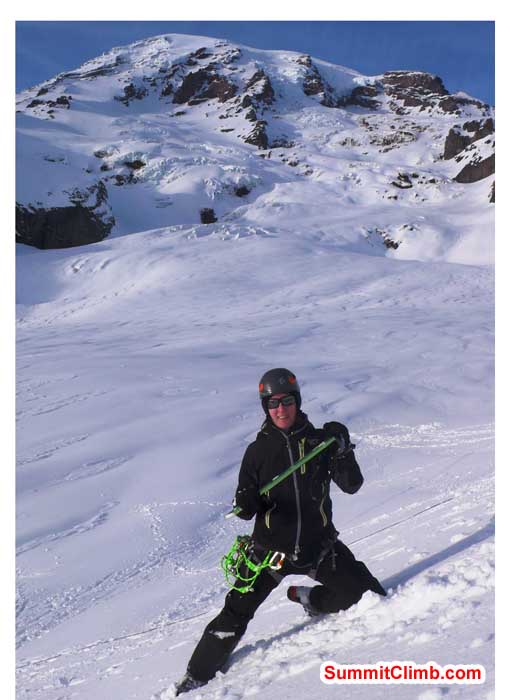
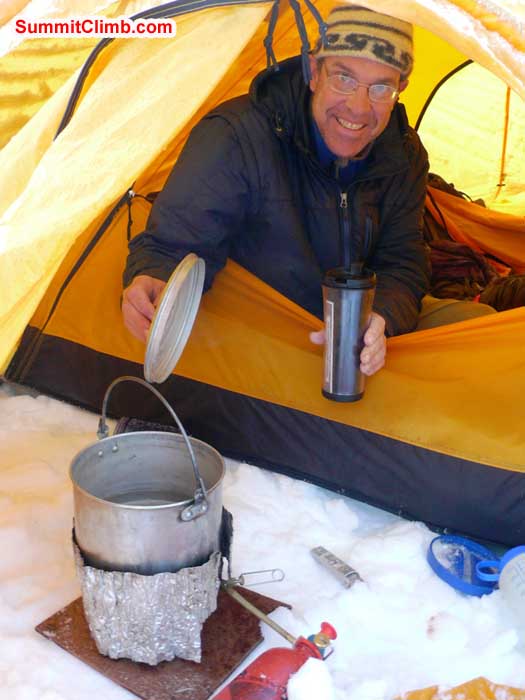
Jaime Herriot shows correct ice axe self arrest position Dan making coffee in the warm tent.
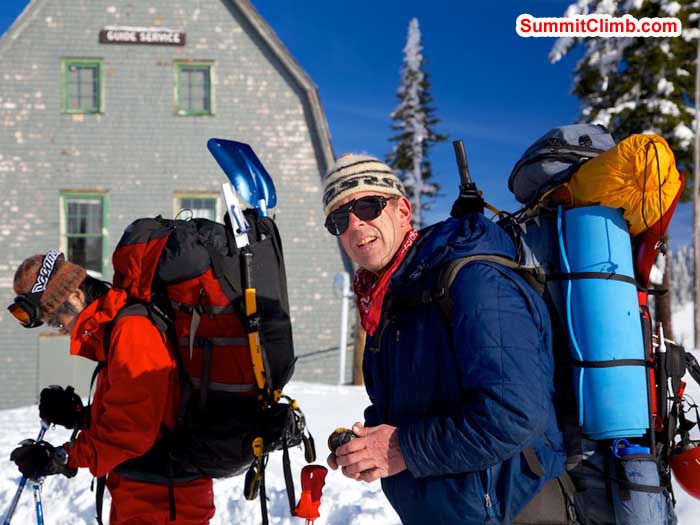
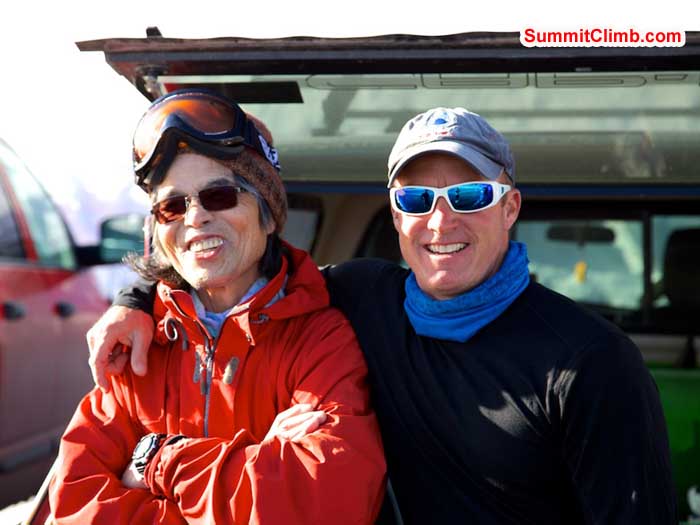
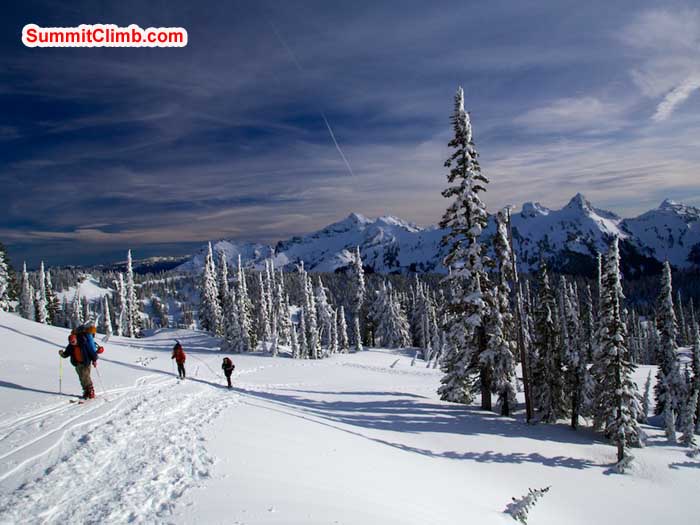
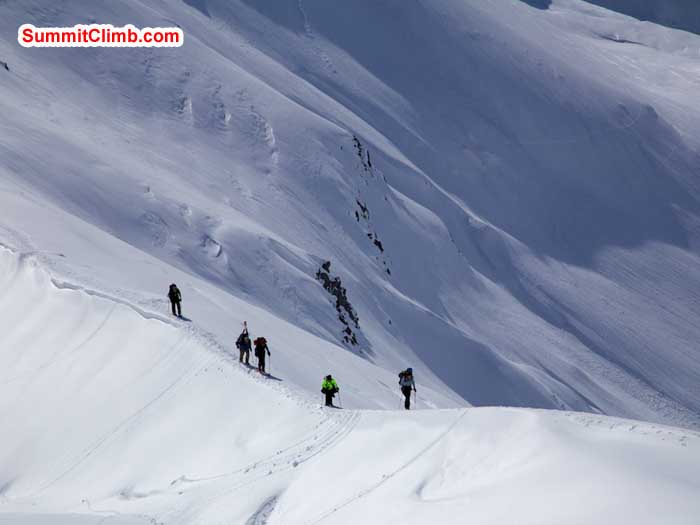
Tak Ogasawara and Dan ready for action. Member are posing for photo. Winter School. Photo by Victor Mesny
Equipment.
Please bring the equipment from the www.SeattleGlacierSchool.org website, here is the link to click
The above link is a bit long so, in case the link is "broken" please be sure you have cut and pasted the entire long link into your browser. Thanks
Optional gear to bring: if you have things that are not on the personal equipment list like stoves, tents, avalanche beacons, shovels, ice climbing protection (pickets, screws, etcetera), please feel free to bring them and test them out. Otherwise we will have all the necessary group gear for the team.
Please note: In addition to the equipment mentioned above, please also bring mountain touring skiis or snowshoes, thanks.
Don't have the necessary equipment? Please just come to Seattle and rent or buy it locally!
What else can you think of?
Can’t join the Winter Climbing School? Please check out our other educational trips:www.EverestGlacierSchool.com , www.EverestNepalTrainingClimb.com , www.EverestTibetTrainingClimb.com ,www.ElbrusSummitClimb.com and www.SeattleGlacierSchool.org : Free of Cost, No Charge!
I look forward to chatting, meeting, and to climbing together with you during the winter climbing school. Thank you very much. Welcome to Our Team and Best Mountain Regards!
-Dan Mazur - Course Leader - www.WinterGlacierSchool.org
Do you have a website? Lets exchange links: www.SummitClimbLinks.com ;
Skype: dan.mazur8848 ;
http://en.wikipedia.org/wiki/Dan_Mazur ;
Ps. PLEASE BE SURE TO TELL ALL OF YOUR FRIENDS ABOUT WHAT WE ARE TRYING TO DO (WE PAY YOU A CASH COMMISSION "FINDER'S FEE" FOR SENDING US NEW MEMBERS). THANK YOU.
